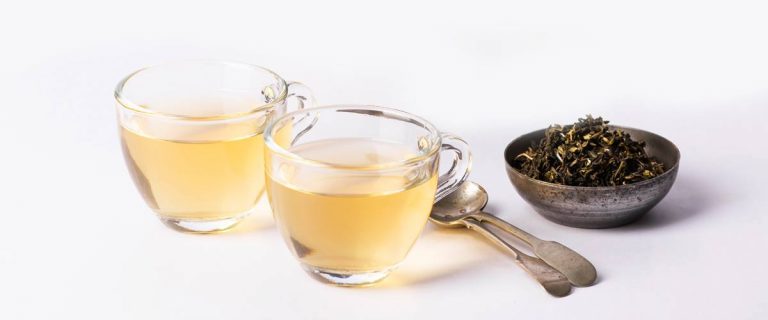Of all the types of teas, green tea’s history is the longest and has been documented extensively across many southeast Asian cultures.
Where was green tea invented?
Although green tea was invented in China, it also has its roots in Southeast Asia and is now widely produced and manufactured in many Asian countries.
Who Discovered Green Tea?
It is widely accepted that green tea was first steeped in 2737 BC during the reign of Emperor Shennong – a mythical sage and a popular figure in the mythology of Chinese agriculture and medicine. It is said that during one of his travels, when Shennong and his convoy stopped to rest, few tea leaves fell into his cup of hot water from a burning tea twig that lay nearby. The water turned dark in color, but it went unnoticed by the emperor. When he consumed this water, he found it to be extremely refreshing and requested the members of his convoy to prepare it for him henceforth.
This event is considered important in the history of teas, especially the history of green tea, since this was the first recorded instance of tea (referred to as ‘cha’ in Lu Yu’s The Classics of Tea) being brewed and consumed.
However, some cultural historians state that green tea origin dates back as far as 3000 years ago when fresh tea leaves were chewed and eaten for recreation by the people who grew it all over Southeast Asia. It was much later that freshly plucked leaves were subjected to any kind of processing before being steeped in hot water.
By the 5th century, during the rule of the Tang dynasty, tea drinking became a social convention all over China. Formalized “tea ceremonies” took shape and tea drinking became an integral part of the social life of the people of China. It was during this era that the process of ‘steaming’ the tea leaves was developed and refined, over the subsequent years.
Steaming – a method universally associated with the production of green tea – is believed to have originated in China in the 8th century. Steaming halted the process of enzymatic oxidation– which causes the darkening of the tea leaves – and allowed the leaves to remain close to their natural “green” state. It was much later in the 18th century that the mechanical processes for “fixing the green” attributes were introduced by the Japanese tea masters. One such process resulted in the creation of sencha green tea, a green tea made by infusing the processed whole tea leaves in hot water.
By then, Chinese tea masters had adopted baking and roasting as a preferred method of “fixing” the tea leaves. Today, most high-quality Chinese green tea leaves are steamed and/or pan fired – a technique wherein fresh green tea is roasted in a large wok on high heat for a short period.

Comments are closed.